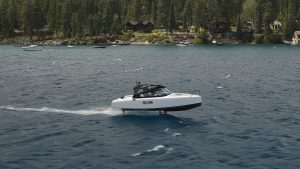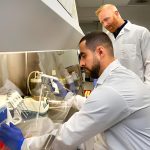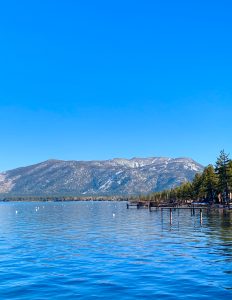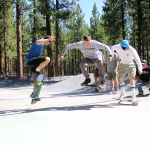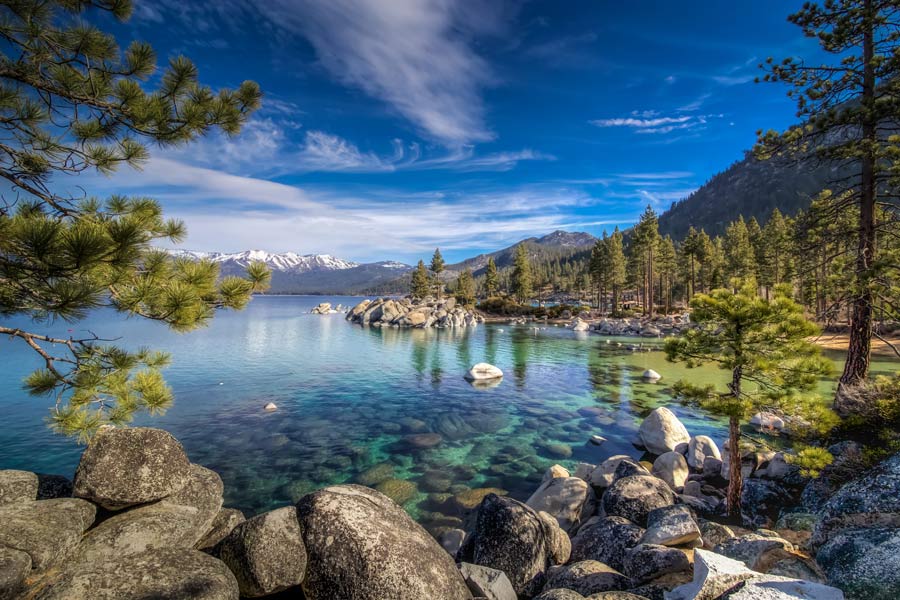FlyTahoe and Candela showcase technology used in upcoming electric flying ferry
TAHOE CITY, Calif. – Though it’s not the same model as the proposed electric ferry, FlyTahoe and Candela’s demo of the C-8 boat uses the same technology that makes it a clean energy, stable and no-wake boating experience. The two companies are coming together to showcase the way these boats work in advance of the P-12 ferry they hope to bring to Lake Tahoe by 2026.
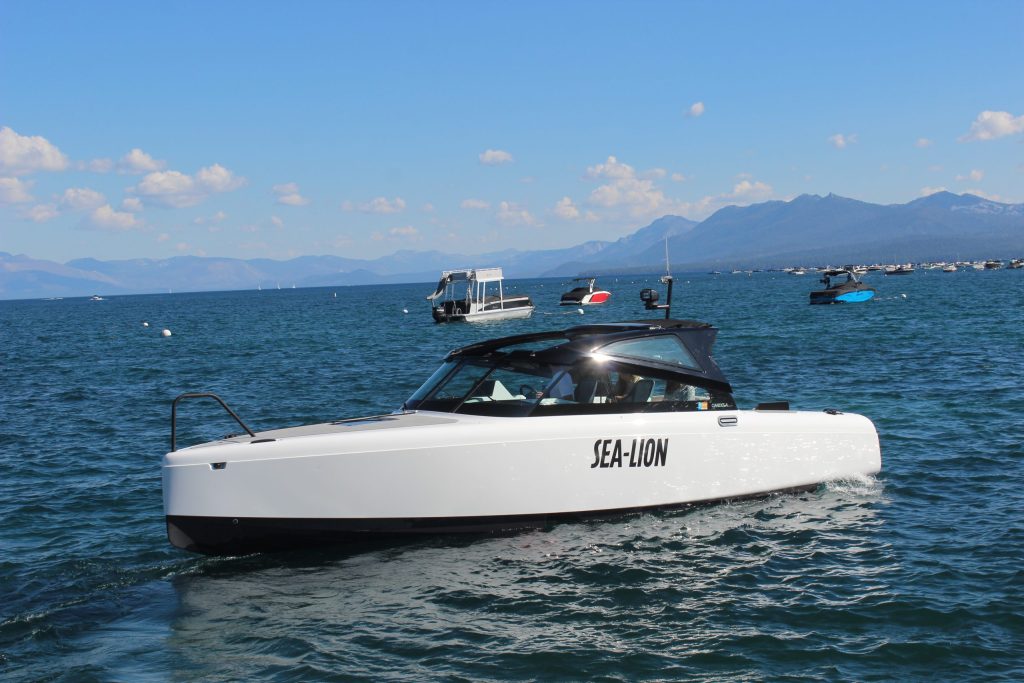
Back in October, Candela launched the P-12 ferry in the city of Stockholm, Sweden, where it has been successfully integrated for use in public transit. The model is the fastest of any current electric vessel, with a cruising speed of 25 knots. Ryan Meinzer, CEO and founder of FlyTahoe spoke with the Sierra Sun in November about bringing the vessel to Tahoe.
Like the P-12, the C-8 boat that FlyTahoe and Candela brought to Lake Tahoe is a zero-emission electric vessel with hydrofoil technology that lifts the boat’s hull out of the water, which is how it gets rid of the wake. The hydrofoils decrease drag and energy consumption, making them extremely efficient.
The boats are made with carbon fiber and have sophisticated sensors that take one hundred measurements per second, helping to stabilize the boat as it takes to the air—a strange sight to be sure, but one that indicates the strides Candela has made in the boating industry.
Product manager at Candela, Sofia Lerm, said that at a presentation, people thought that the footage she showed was fake or AI-generated. “We’re showing that this technology is real. And it’s not just real, but it’s tangible. We’re not at the rendering stage—we’ve put out operational vessels.”
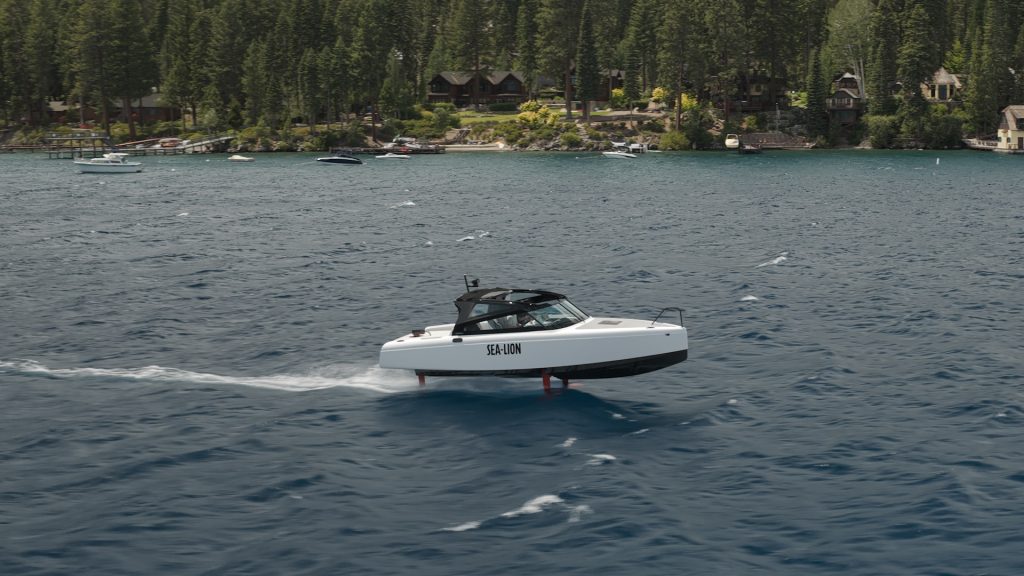
Meinzer is excited about how the electric ferry aligns with the goals of agencies around the lake. It links with reducing vehicle miles traveled, environmental protection and transportation, which he says also links with housing. “If people can commute more efficiently from shore to shore, that opens up the possibilities of where they can live.”
Along with accessibility for wheelchair users, Meinzer also has been looking at pricing affordability so that everyone can use the ferry. FlyTahoe has been considering a hybrid pricing model with reduced fare for those using it for work hours and a higher fare for parts of the day when tourists would use the service.
This isn’t the first time that a cross-shore ferry has been brought to Tahoe’s table. But Meinzer has faith that these technological strides are what will make it possible this time around. “The regional plan had a ferry that didn’t materialize, and I think it’s because of two reasons. One, it’s expensive to run ferries. And two, diesel ferries create massive pollution.”
“The Candela hydrofoil and electric combo makes boats ten times as efficient, without the pollution. I think this is possible, and it’s all because of Candela,” said Meinzer.
Both Lerm and Meinzer felt optimistic about getting the ferry to Lake Tahoe by 2026.
Candela is still working on getting manufacturing in the United States, a requirement due to the Jones Act, which states that any vessel going between two U.S. ports must be manufactured in the United States. In addition, they are also in the process of getting U.S. Coast Guard approval. “They’ve been very approachable about this, but they must also do their due diligence,” said Lerm.
But Lerm says they’re a significant percentage of the way there. Candela is certified by Det Norske Veritas, a classification society that establishes and maintains technical standards for ships and offshore structures, and is authorized by 130 maritime administrations to perform verification on their behalf.
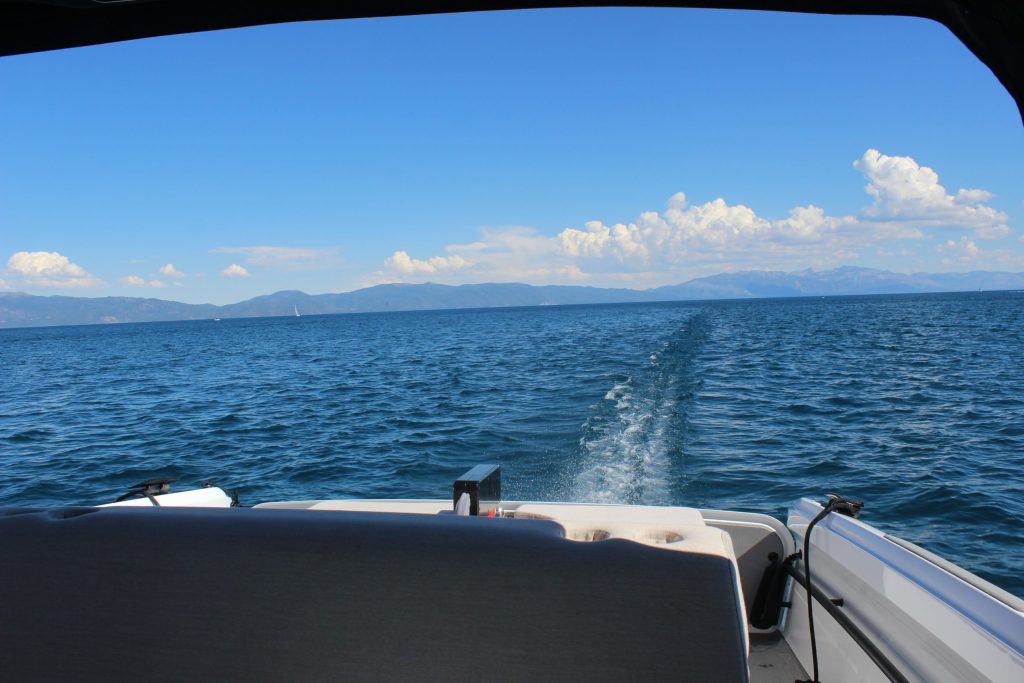
In the meantime, Meinzer has been hard at work securing permits, expanding their partnerships with marinas, looking at parking needs and increasing charging infrastructure.
While the P-12 ferry could realistically run with the two chargers at Homewood and the Tahoe City Marina, Meinzer is interested in getting more installed, which would open routes for the ferry and hopefully increase interest in electric leisure vessels as well. “A rising tide lifts all boats,” quoted Meinzer, who stated that one of FlyTahoe’s goals is to enable car-free living in the basin.
Lerm agreed, saying, “We believe the key for public transit is frequent departures.” A single P-12 carries 30 passengers, so Candela and FlyTahoe envision a fleet of P-12 ferries, the same way they operate in Stockholm.
Though Meinzer couldn’t yet disclose the partnerships he’s made, he said that FlyTahoe has solidified a lot of the behind-the-scenes deals that would make this project possible.
And while he understood why people were skeptical, he had hopes about changing their minds. “I’m interested in a constructive dialogue with them, to address the problems and concerns they have and make this even better.”
Eli Ramos is a reporter for Tahoe Daily Tribune. They are part of the 2024–26 cohort of California Local News Fellows through UC Berkeley.

Support Local Journalism

Support Local Journalism
Readers around the Lake Tahoe Basin and beyond make the Tahoe Tribune's work possible. Your financial contribution supports our efforts to deliver quality, locally relevant journalism.
Now more than ever, your support is critical to help us keep our community informed about the evolving coronavirus pandemic and the impact it is having locally. Every contribution, however large or small, will make a difference.
Your donation will help us continue to cover COVID-19 and our other vital local news.

